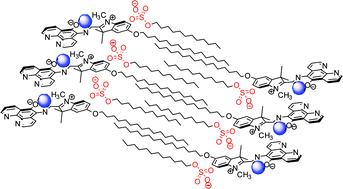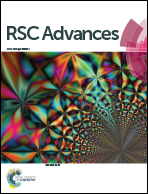Quantitative investigations of thermal and photoinduced J- and H-aggregation of hydrophobic spirooxazines in binary solvent through UV/vis spectroscopy†
Abstract
The aggregation of two hydrophobic spirooxazine dyes has been investigated in water–acetonitrile binary solvent and in presence of sodium dodecylsulfate (SDS). For the thermochromic molecule 1, aggregation is spontaneous and occurs when a large amount of water is added to an acetonitrile solution of the dye. There exists an optimum value of the water–acetonitrile molar ratio giving rise to a sharper H-aggregate visible absorption spectrum. Kinetic analysis of the H-aggregate formation has shown that there is an increase in the sticking probability of the monomers, as the aggregates grow. A subtle interplay between H- and J- aggregation was witnessed by adding small amounts of SDS. This change is so sensitive that this system could be the basis of a new chemosensory technique for SDS assessment. Excess of surfactant induces the collapse of the aggregates and the re-dissolution of the dye under the form of a merocyanine–SDS ion-pair. For the spirooxazine 2, aggregation must be photo-induced. Comparison of the spectral evolutions of the two dyes in the presence of SDS has shown that the opening of the closed spirooxazines paves the way to the merocyanine–SDS ion-pair formation. Reversibility of the aggregation has been suggested to occur when the aggregate size is still small. Finally, reversibility has been checked experimentally by precipitate re-dissolution and spirooxazine recovery. Possible structures and reactivity of the H- and J-aggregates have been deduced.


 Please wait while we load your content...
Please wait while we load your content...